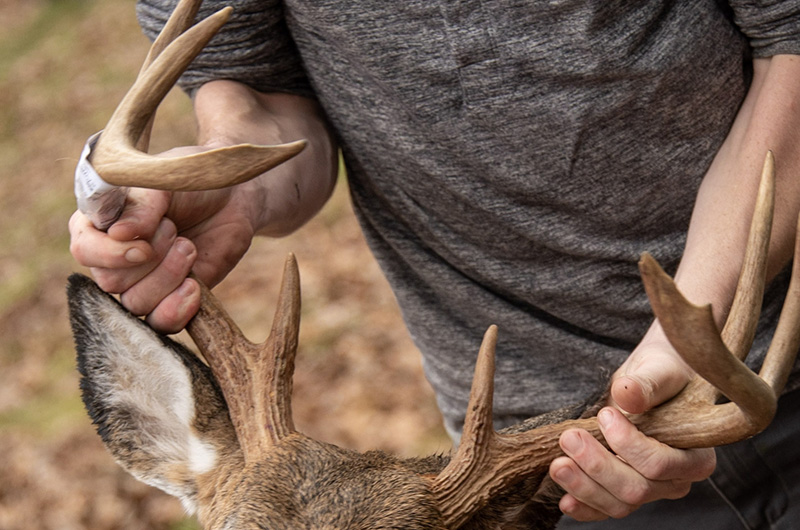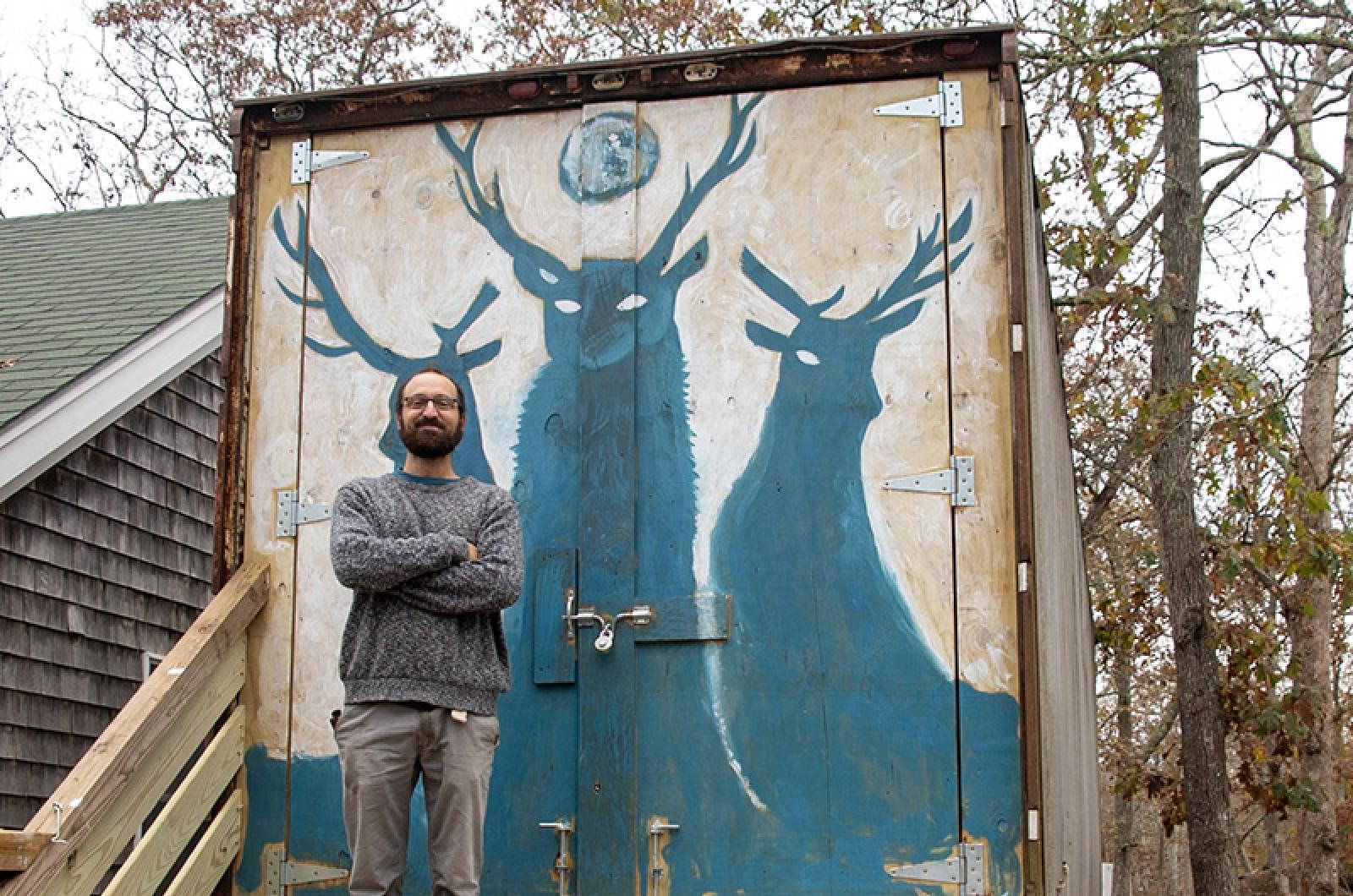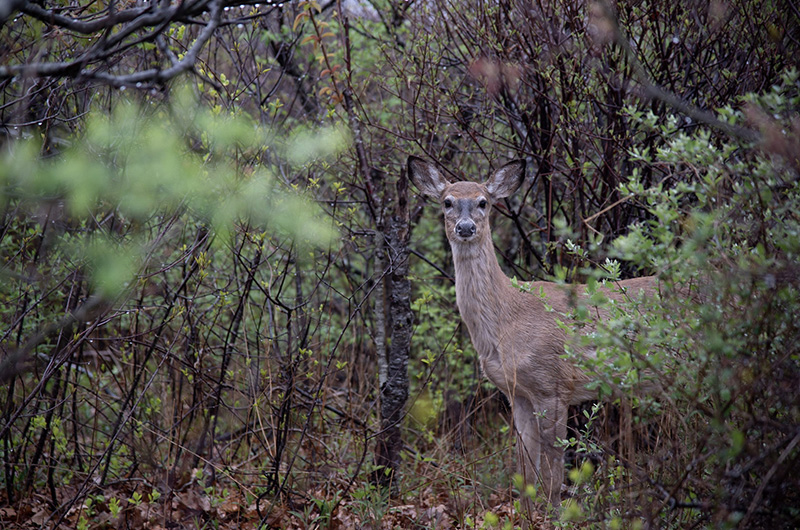Ned Casey has hunted deer on the Island for 46 years. Through those years he has seen many changes, including in access to hunting areas and the deer herd. But this season he said the deer hunting community has experienced one of the most notable shifts in recent memory.
In effort to cull the burgeoning deer population, reduce tick-borne illness and provide meat to those in need, a number of Island organizations have joined forces to offer hunters a $100 subsidy for each tagged doe after their first two and provide an incentive for donating deer, once they have filled their own freezers.

The subsidy is intended to offset the cost of hunting and the time hunters are taking to do what is being considered by many a public service.
It is the first time a monetary incentive has been offered to hunters on the
Island. It has been met with both enthusiasm from eager hunters and skepticism from others who put themselves in the camp of traditional game hunters, who by definition operate outside the realm of profit.
The subsidy program is only being offered to residents of Martha’s Vineyard and is restricted to bow hunting, which runs from Oct. 7 through the end of shotgun season on Dec. 14. Funding of up to $35,000 — which would cover a take of 350 does — has been provided by an anonymous donor.
As of Tuesday, 23 hunters have registered for the program and 50 deer have been tagged and hung in the community storage cooler built this season near the Agricultural Hall in West Tisbury. Seven of the deer have been donated to Island Grown Initiative for venison distribution in the community.
Massachusetts hunters are limited to two bucks per season, but there is no limit to the number of does a hunter can take. Last week, Mr. Casey pulled his truck into the Agricultural Society parking lot to collect one of his deer hanging in the community storage cooler. He said that in the 1970s, if you were able to take one deer per season you would be considered lucky. This year he has already taken four does and one buck.
Mr. Casey praised the subsidy program and said it is well thought out.
“It’s a continuum from the moment you walk into the woods with your bow,” he said.
Marc Macfarlane, the newly hired manager of the community cooler, who is on call from 8 a.m. to 8 p.m. to unlock the cooler and assist hunters with their deer, explained the process.
He said once a deer is hunted and field dressed, it can be brought to the community cooler where it is hung for up to 14 days. There are strict sanitary guidelines for dressing deer before they are brought to the cooler.
If the deer is donated, IGI transports the animal to Jefferson Munroe at The Larder in Vineyard Haven, where the meat is butchered and then distributed through the Island Food Pantry and other community food outlets.
The seven deer that have been donated have yielded over 200 pounds of venison cuts, about 800 meals, Mr. Macfarlane said.
The subsidy is both helpful for Islanders who need protein and may not be able to afford it, and integral to controlling the deer population, organizers say.
Brian Athearn, president of the Agricultural Society and a hunter himself, compared deer on the Island to fish in a tank.
“If you have too many fish in a tank, the fish suffer. Right now [the deer] are suffering.” he said. “There’s a lot of competition for food . . . Now they’re going after farms, shrubs and into residential areas.”
There are no available hard numbers for the size of the deer herd on the Vineyard, but Mr. Athearn said state estimates put the number in the range of 5,000 to 6,000 — well over the statewide management goal of six to 18 per square mile, and likely closer to 40 deer per square mile.
Mr. Casey said the deer browse line is beginning to rise, meaning that the deer have eaten ground plants and are moving onto higher trees and shrubs that usually function as winter reserves for the animals. He said this shows the deer are under more pressure in their search for food.
Each year hunters on the Island take between 800 to 900 deer during bow and shotgun the season. Mr. Athearn said if the subsidy program could increase the number to 2,000 deer, it would put a “healthy dent in the population.”
But not all hunters are enthused about the subsidy program.
“While I appreciate the multi-pronged effort to support deer hunters, particularly the creation of a community cooler, I’m uneasy with the notion of paying hunters,” said longtime Island hunter Nelson Sigelman.
“It’s like anonymously buying death. That’s what I don’t like about it,” said Alley Moore, a respected deer hunter on the Island. “I grew up in the culture that game animals were not for sale, there was no money in it . . . That is closer to market hunting.”
Market hunting has a long history of pushing populations close to extinction, such as bison and seals in the late 19th and early 20th centuries. Market hunting is illegal in the United States.
And while a subsidy is not the same as market hunting, some hunters worry that a monetary subsidy could spur illegal hunting practices such as poaching or jacking deer.
Mr. Sigelman said $100 is not a big incentive to break the law, considering the penalties, but he also noted the limited presence of environmental police on the Island has long been a problem in enforcing hunting laws.
Mr. Athearn cautioned that the program is in its first year, and said it will be carefully evaluated.
“This is a pilot year, training-wheels-on, type of program,” he said. “At the end of the season we are going to see what kind of information we can glean from this . . . and have a discussion on what we are going to do next year.”








Comments (14)
Comments
Comment policy »